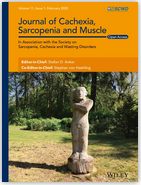 Aldehyde dehydrogenases (ALDHs) are key players in cell survival, protection, and differentiation via the metabolism and detoxification of aldehydes. ALDH activity is also a marker of stem cells. The skeletal muscle contains populations of ALDH-positive cells amenable to use in cell therapy, whose distribution, persistence in aging, and modifications in myopathic context have not been investigated yet.
Aldehyde dehydrogenases (ALDHs) are key players in cell survival, protection, and differentiation via the metabolism and detoxification of aldehydes. ALDH activity is also a marker of stem cells. The skeletal muscle contains populations of ALDH-positive cells amenable to use in cell therapy, whose distribution, persistence in aging, and modifications in myopathic context have not been investigated yet.
The Aldefluor® (ALDEF) reagent was used to assess the ALDH activity of muscle cell populations, whose phenotypic characterizations were deepened by flow cytometry. The nature of ALDH isoenzymes expressed by the muscle cell populations was identified in complementary ways by flow cytometry, immunohistology, and real-time PCR ex vivo and in vitro. These populations were compared in healthy, aging, or Duchenne muscular dystrophy (DMD) patients, healthy non-human primates, and Golden Retriever dogs (healthy vs. muscular dystrophic model, Golden retriever muscular dystrophy [GRMD]).
ALDEF+ cells persisted through muscle aging in humans and were equally represented in several anatomical localizations in healthy non-human primates. ALDEF+ cells were increased in dystrophic individuals in humans (nine patients with DMD vs. five controls) and dogs (three GRMD dogs vs. three controls). In DMD patients, such increase was due to the adipogenic ALDEF+ /CD34+ populations, while in GRMD dogs, it was due to the myogenic ALDEF+ /CD34- cells. Phenotypic characterization associated the ALDEF+ /CD34- cells with CD9, CD36, CD49a, CD49c, CD49f, CD106, CD146, and CD184, some being associated with myogenic capacities. Cytological and histological analyses distinguished several ALDH isoenzymes expressed by different cell populations in the skeletal muscle tissue belonging to multinucleated fibres, or myogenic, endothelial, interstitial, and neural lineages, designing them as potential new markers of cell type or of metabolic activity. Important modifications were noted in isoenzyme expression between healthy and DMD muscle tissues. The level of gene expression of some isoenzymes suggested their specific involvement in muscle stability or regeneration in situ or in vitro.
This study unveils the importance of the ALDH family of isoenzymes in the skeletal muscle physiology and homeostasis, suggesting their roles in tissue remodelling in the context of muscular dystrophies.
